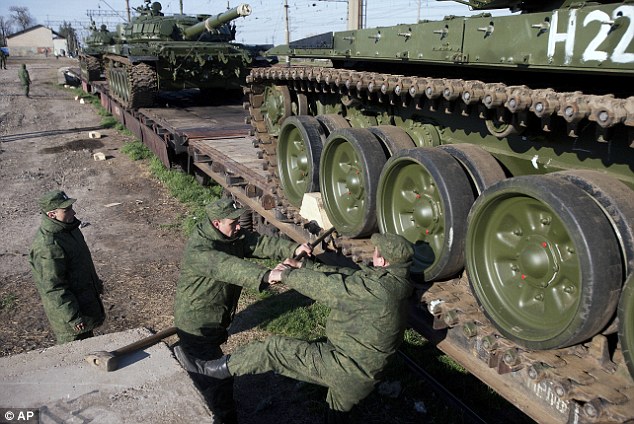
Russia’s Railways Not Ready for War
Publication: Eurasia Daily Monitor Volume: 12 Issue: 170
By:

Even more than most continental powers, Russia for more than a century has relied on railroads to move massive amounts of men and materiel to respond to military challenges—a reflection of Russia’s size and underdeveloped highway system. But today, in contrast to Soviet times, Russia’s railways are not ready for war because the country’s leadership is focusing on airpower and missiles rather than “lowly” trains. Yet, as one Russian analyst warns, unless serious changes are introduced in railway operations, that alone could become a serious bottleneck in future crises—especially in the eastern part of the Russian Federation. Perhaps equally important, he suggests, Russia’s rail network and its railway forces could limit Moscow’s choices regarding attacking others or defending its own territory.
In a commentary on APN, Dmitry Verkhoturov, a specialist on the geographic dimension of Russian power, argues that the current railway troops, consisting of ten brigades organized in four territorial commands, are insufficient to handle their immediate tasks—the reconstruction of bridges and lines destroyed by military operations. Moreover, the Russian railway troops cannot even ensure that the country’s trains could move troops and heavy weapons along existing track in advance or during a crisis. The current troops have the wrong kinds of trains—electric ones, which would be unable to operate if power was severed during hostilities—or too few to be able to do the job. And no matter how well Russian soldiers are prepared and how good their weaponry may be, if they cannot be delivered to where they are needed, they will not be effective (APN, September 17).
Russia’s political leadership currently underestimates this role of the railways, forgetting that “the broad maneuver of forces across the entire space of Russia without railroads and with military aviation alone is impossible,” Verkhoturov says. That is particularly the case in the event of a major war. Soviet officials recognized this reality and ensured that there were enough steam locomotives and militarized railway personnel to handle any crisis. But “now [Russia] does not have a mechanism capable of shifting the rail system onto military tracks in a short time.” The lack of such a system can mean the difference between victory and defeat.
At present, Russia’s railways are not ready for a major conventional war, as might arise with China, let alone a nuclear war. For the latter, the analyst continues, Russia’s railways and railway forces are “completely unprepared,” even though the country’s political leadership now talks routinely about the possibility of such conflicts in the future.
There is a solution, he suggests, and it consists of a combination of “the well forgotten old” ways of doing things and the introduction of new turbine technologies. These remedies will serve not only the rail lines but also the needs of the military and the civilian population in the event that other power generating plants are destroyed or electric distribution networks are disrupted—as would almost certainly be the case in the event of a major war.
Russia’s railway forces must again have, as they did in Soviet times, their own rolling stock so that they can “immediately, and on order, begin military transfers even under conditions of complete disorganization on the railroads,” Verkhoturov recommends. “And these transportation possibilities must be sufficient in order to survive the initial period of chaos that would ensue during a transition from commercial to military use of the lines.”
The Soviet model, which consisted of a series of special railway reserve columns of 15 to 30 locomotives in each military district, each with two full staffs and supply facilities, should be revived, the military specialist argues. Such columns played a key role in the Soviet victory over Germany in World War II. And after the war, these trains served as a means of carrying off trophies and repatriated materials from Germany (as well as formerly German-occupied Eastern European territories—see for example, Gazeta Wyborcza, April 28, 2014) to the Union of Soviet Socialist Republics (USSR), even as they served the needs of Soviet occupation forces. (Verkhoturov’s reference to that historical issue almost certainly is intended to attract the attention of Vladimir Putin who served as a KGB officer in East Germany several decades ago.)
According to Verkhoturov, “in a war of maneuver, locomotive columns, in conjunction with restored trains and armed trains […], can ensure the creation of operational and tactical superiority over any for where there are railroads or where they can be quickly built. In particular,” he writes, “this is important in the eastern regions of Russia,” along the Chinese border.
But Moscow cannot simply restore the Soviet model, because the Soviet rail system was based on steam engines rather than electric trains. Unfortunately, he says, the shift to electric trains in recent decades means that the country’s rail system could easily be disrupted if military transit had to depend on a reliable supply of electricity—something that in the event of a major war, it would not be able to do.
To address that problem and to supply electricity to military units and adjoining civilian populations, the analyst suggests, Moscow must shift its military railway troops to turbine engines that could use gas or coal to produce electricity to drive the trains and supply any excess power to others.
Any moves in this direction would thus serve as an early indicator of Moscow’s intentions, one that up to now has been largely neglected by military analysts in Russia and abroad.




